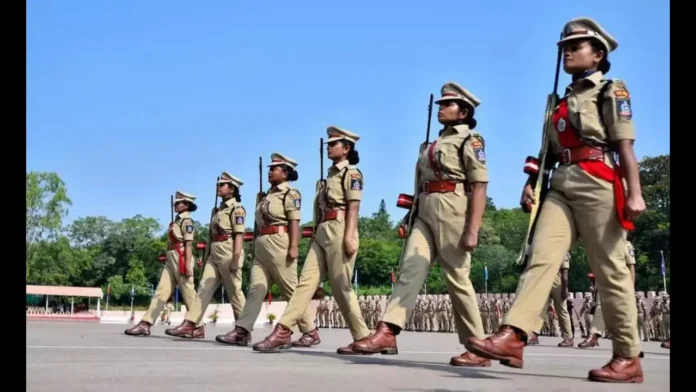After the spectacular success of Operation Sindoor, it is pertinent to address the internal security challenges India faces
What are the biggest takeaways from some of the incidents of mob violence that one could witness in recent past in Haldwani, Nagpur, Indore, or Murshidabad? Invariably, it is that organised mob violence is becoming a major tool to create disturbance across India, and that time has come to give as much priority to public safety as has been given to national security.
SINISTER PLOT BEHIND MOB VIOLENCE
Over the last few years, such flash mob violence has become a reality. Fact is that India is yet to crack the code on how to effectively deal with such incidents, or preempt them. Every time an incident like this happens, India’s state level police units, responsible for maintaining law and order, have been on the firefighting or damage control mode. All that it takes for perpetrators is just a two-hour window to ravage a place, and send shivers down the spine of the entire nation. An hour or two, as it appears from precedent cases, is generally the time that the local police station requires to mobilise additional forces, and reach the sight of violence in full might.
NEW TEMPLATE FOR HYBRID WAR?
While such incidents may or may not have external linkages, India’s biggest “chink in the armour” remains its civil policing, with out-of-sync “Rules of Engagement”, inadequate manpower, stranglehold of the ruling party on policing, a carry-forward of the colonial legacy, and alleged judicial overreach, which has often restricted the ability of police to deal with crime in the strictest manner.
On top of it, there is apparent lack of accountability of top administration. At most, the SP or the City Police Commissioner may get transferred. Several such incidents of violent rampage by organised mobs, armed with sharp edged weapons, stones and bricks, with deliberate objective of targeting Hindu families have happened over the last few years. What happened in the Delhi 2020 Anti-CAA violence is being emulated in many parts of India now.
IS PUBLIC SAFETY A PRIORITY?
The biggest question that needs to be addressed now is that while the nation has been considerably made secure from threats of major conventional wars, and most of India in general have been made safer, with massive decrease in threats from terror attacks, are people safe at home from such organised mob violence? Is there a massive gap in task execution capacity of Civil Police, vis-à-vis that of Indian Armed Forces, in their respective domain?
One must ponder as to what goes through the mind of someone who is a law-abiding, tax paying citizen, and is extremely passionate about India’s progress, but finds in the middle of the night that his home is being rained with bricks by a communally charged mob, and his house, car, or even shop has been deliberately targeted and gutted? Would India’s progress matter to him anymore henceforth?
This is why the core issue of basic public safety must be addressed. Public Safety has to be given the same priority as National Security. The onus is on the respective states to make the law-abiding citizens feel as much safe at home at night from risk of violent mob rampage, as they feel confident in their country’s ability to deal with any external military threat. This means police reforms must be given as much focus as military modernisation has been given over the years.
MODERNISING LOCAL POLICE STATION
The crux of all the problems with respect to tackling organised crime, and especially the threat of flash mob violence by radicalised elements, is sheer lack of investment in police modernisation, especially the absence of capacity building of civil police and well as archaic “Rules of Engagement”. Modernisation of local police station, the most critical link for last mile policing, has never been much of a priority even in the realm of police modernisation, even though the local police station should ideally be the best equipped entity in the internal security grid, since it is generally the first respondent during any eventuality.
Every year, when annual budget is announced by the Union Government, defence and security analysts wait with anticipation to find out as to how much has been allocated for India’s Armed Forces as part of defence budget, and for CAPFs as part of MHA’s share of budget. But does anyone really care as to how much is allocated by respective states towards state police budget? Not really. This is where a lot of work has to be done.
TAKING CUE FROM SUCCESS STORIES
It is true that both the Centre and the respective states have invested much in developing special police units, in each state, such as Anti-Terrorist Squads (ATS), Special Task Forces (STF) and India Reserve Battalions (IRB). Maoist infested states have raised highly trained elite anti-Maoist units, armed for cutting edge equipment. A significant amount of work has been done by Modi Government, especially the Union Home Ministry under Amit Shah, to streamline anti-Maoist operations, and synergise coordination between central and state police units for optimal capacity building and maximum output. As a result, Maoism is now being literally wiped out from the map of India.
A similar approach, is thus now needed for streamlining India’s city and district level policing. At its core, some very fundamental reforms are needed to ensure that India can effectively deal with, and neutralize, this growing menace of organised mob violence.
TREAT MOB VIOLENCE AS ORGANISED CRIME
In the first place, organised mob violence must be treated as organised crime and should be dealt accordingly with stringent non-bailable provisions. Further, organised stone pelting itself should be defined as a distinct cognizable offence. Stones are no less dangerous when used as projectiles by a communally charged-up mob.
Also, much like in case of terrorism, radicalisation plays a critical role in communally instigating a mob before it embarks on a rampage operation. Therefore, for dealing with both terrorism and communal mob violence, India needs a new set of laws to define radicalisation itself as an offence. It is this hardcore brainwashing that is cultivated for years, before someone becomes extremely dangerous for the society. On many occasions, extremely radicalised elements had to be let off because they were yet to commit any major offence. And yet, in certain instances, such radicalised elements, when let off on bail, went ahead and committed heinous acts of terror.
ADDRESS THE ELEPHANT IN THE ROOM
Another important issue that needs to be addressed is that of “Rules of Engagement” for law enforcement agencies in India, especially the local police units. From the Haldwani violence to Nagpur violence, too many such instances of organised violence in the past, including that of the horrendous Azad Maidan violence, in the most unfortunate manner, the women police personnel were brutally targeted and molested by perpetrators. What is the Commissioner of Police of the concerned city or the District SP supposed to do in such situation? One may appreciate that at times police is supposed to show restraint in the greater interest, but can these kinds of incidents, which are becoming routine, be accepted? Especially when policewomen are molested, violated or brutally injured, should it not enrage the nation? What is the Police Officer on the spot supposed to do? Should he not be empowered to confront such violent elements with an iron hand without any fear of retribution on charges of so-called human rights violation? Or should he be made to wait inordinately for the green signal from his superiors and political leadership?
SENSE OF IMPUNITY AMONG PERPETRATORS?
Reality is that there is a sense of impunity among perpetrators, that even when they are on violent rampage, they are confident that the police personnel would not be allowed to apply hard power to contain them. It is this perception among perpetrators that policemen have their hands tied, even while there is the gravest of risks to their lives or that of ordinary civilians, unless “Order” comes from the “Top” to exercise force, that is presumably at the core of rot in India’s ‘law and order’ architecture. There is simply no deterrence.
The helpless policemen, assaulted by armed mob, at times have even been seen running for their lives. If in any country, the policemen sent to protect law abiding citizens, have to run for their lives, does it augur well for that country’s internal security? Is it that political correctness or vote bank considerations is coming in the way of making India more secure internally?
STEPS NEEDED
India must therefore, seriously introspect to reform its legal architecture for last mile policing, put more funds for modernisation of civil police stations, authorize police to have a no-mercy approach towards perpetrators, for maintenance of “law and order”, and empower even the CAPF units in the vicinity to come to the aid of people at the earliest, during crisis periods, without being entangled in long-drawn bureaucratic processes. Finally, it must also be considered if “Law & Order” as a State Subject, has remained a facilitator or has become an impediment to internal security management. Perhaps time has come to put it in the Concurrent List.
* Pathikrit Payne is a Senior Research Fellow with Dr Syama Prasad Mookerjee Research Foundation.








